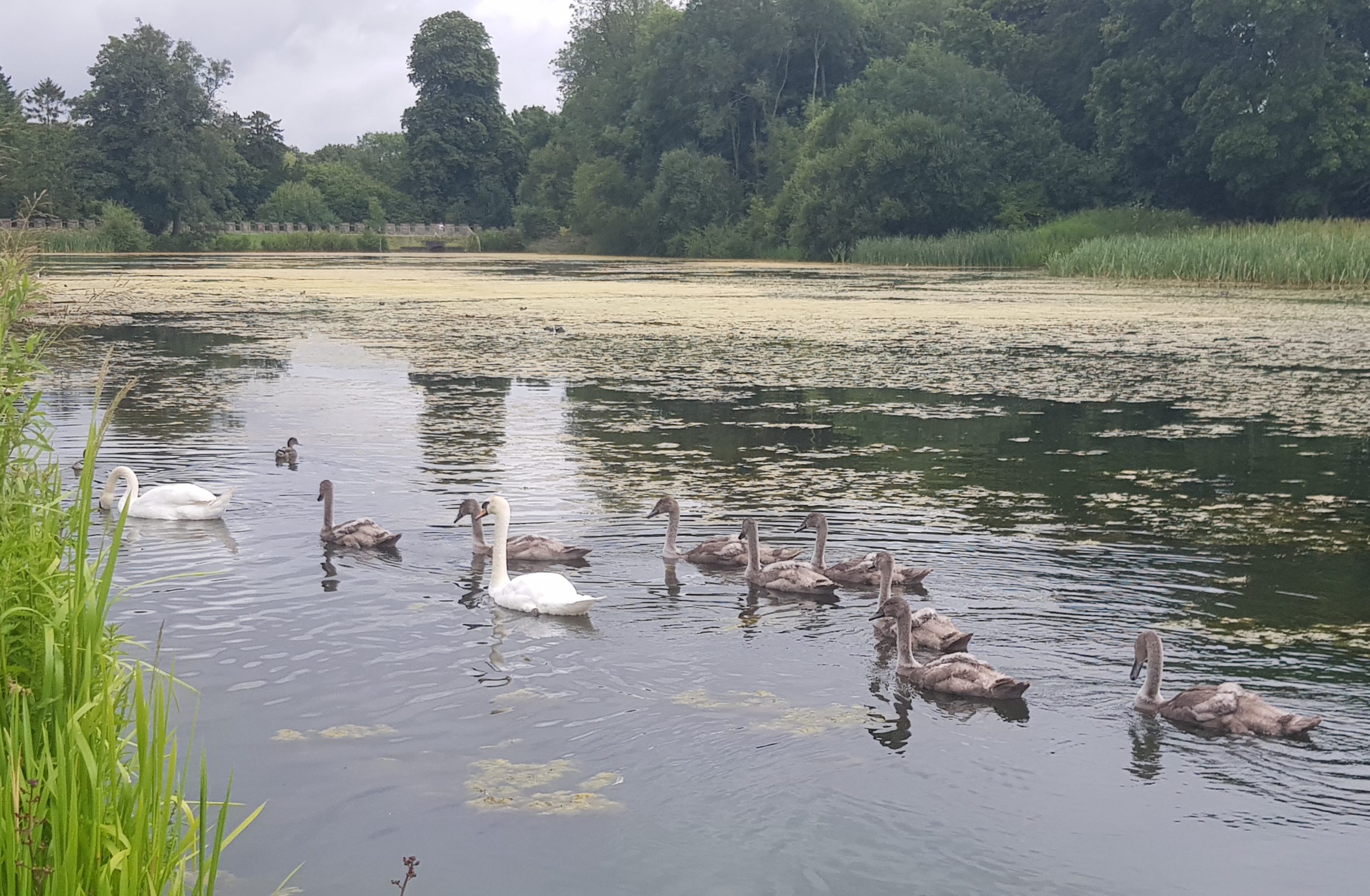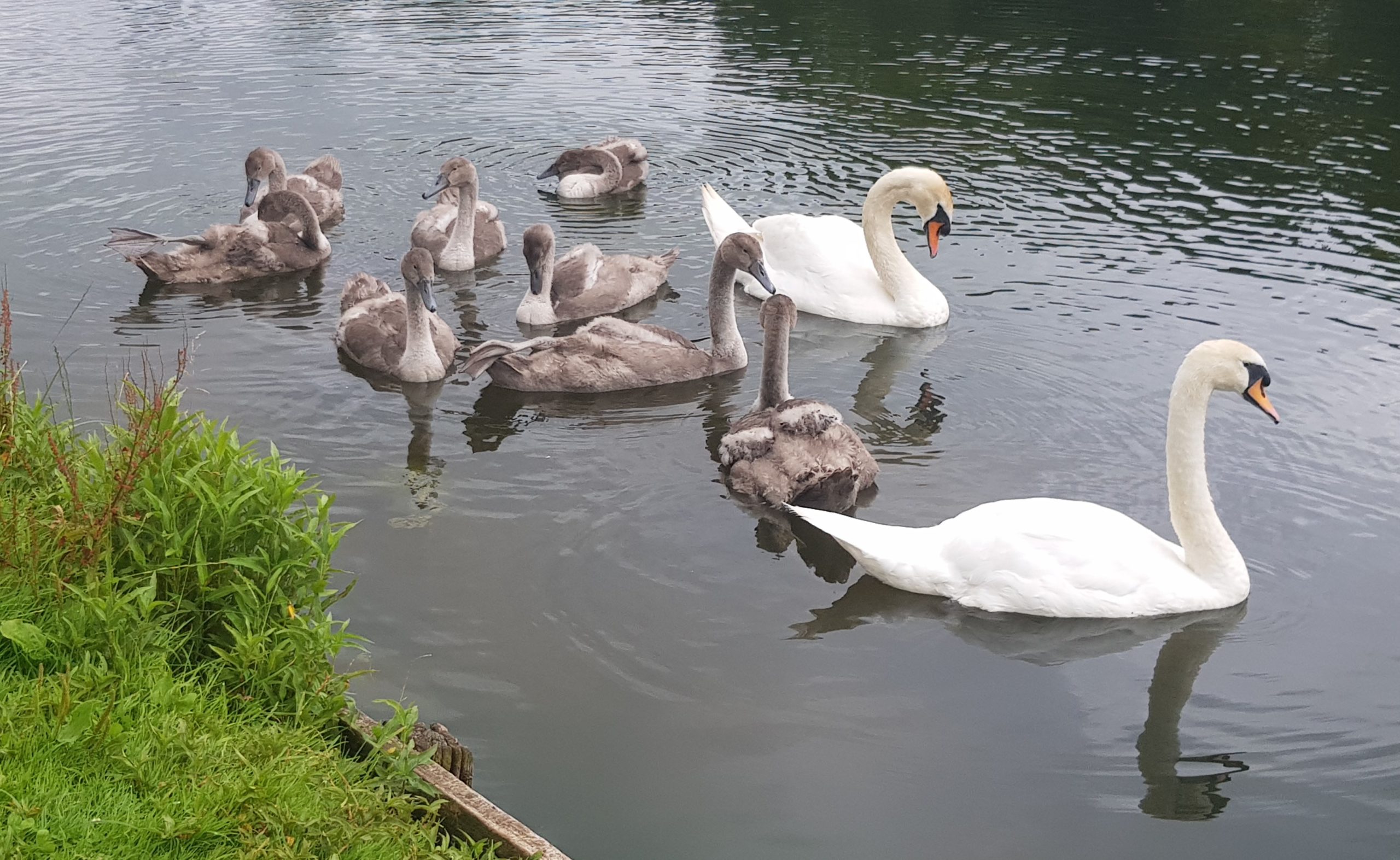Lydiard Park’s Cygnets on the Lake
We are delighted to say that as of the middle of July, our Lydiard cygnets are growing rapidly, and are spending a lot of time on the lake. Friends’ Trustee Frances Bevan took this lovely photo on one of her frequent walks around the park.

Three species of swan live in the UK but it is the mute swan that is a year-round resident and most likely to be found on our rivers and lakes. The swan is huge in comparison to most other birds, and a striking white colour although the cygnets are grey and only achieve their white plumage on maturity. An adult male swan can be 14kg in weight which means that they need a relatively large area of open water on which to land and take off.
In winter, mute swans are joined by two other migratory species from the north: the whooper and Bewick’s swans. These are often known as ‘wild swans’, in contrast to the mute, which was once called the ‘tame swan’ because during the medieval period these birds were kept in a semi-feral state, to provide food and feathers.
At the start of the breeding season the male builds a large nest out of aquatic vegetation, in which the female usually lays between five and seven eggs, which she alone incubates for between five and six weeks. Swans mate for life and they can also be very territorial which is why it isn’t a good idea to get too close to them! They are almost entirely herbivorous; it isn’t a good idea to feed them with bread as it is very low on nutrition and not good for them. Their long necks enable them to reach the vegetation on the water bed.
The swans on the lake at Lydiard make a wonderful picture throughout the year, not least in a summer sunset and if you watch them in the spring you may see a cygnet hitching a ride on its parent’s back!
